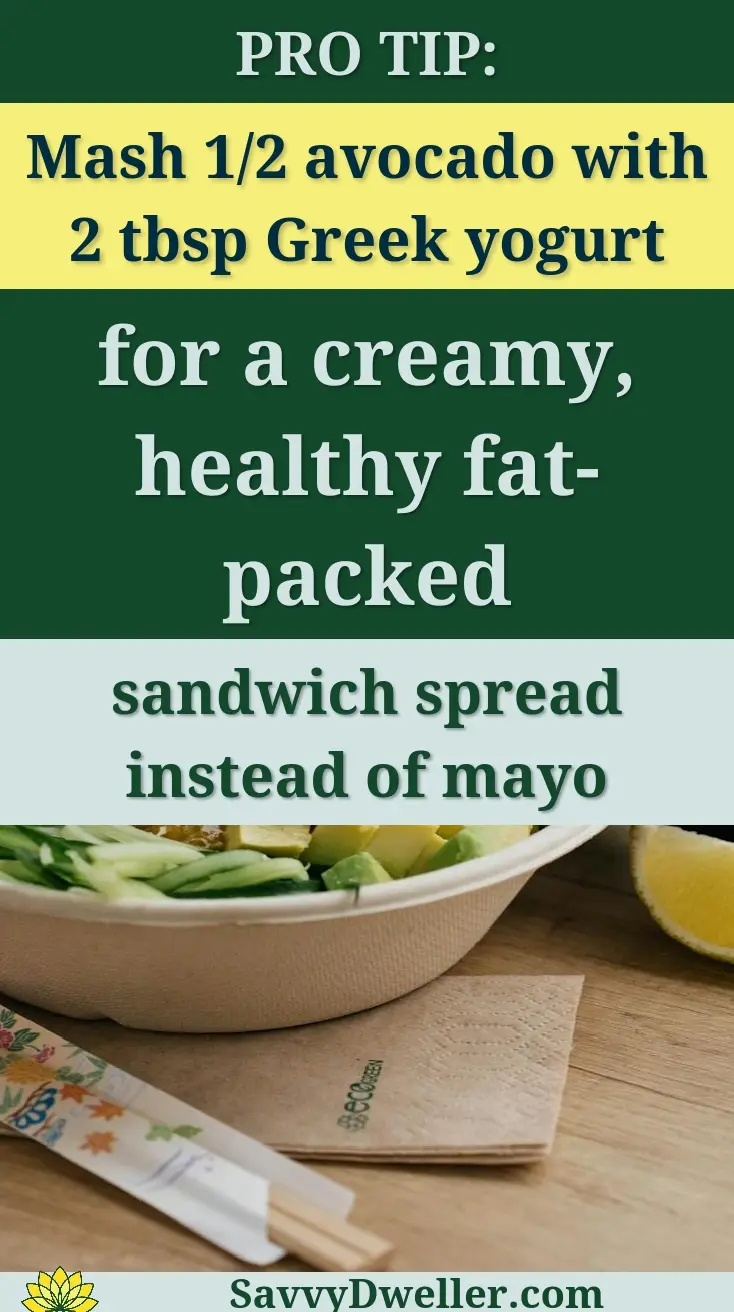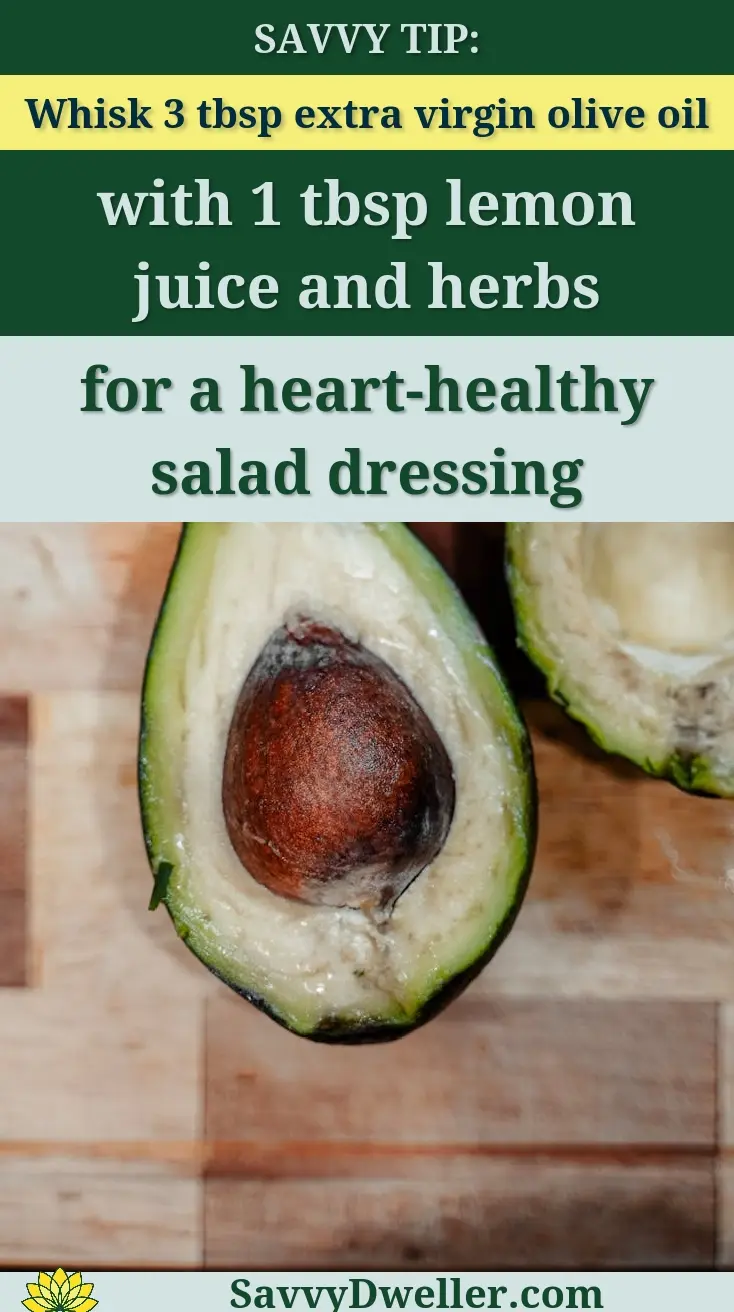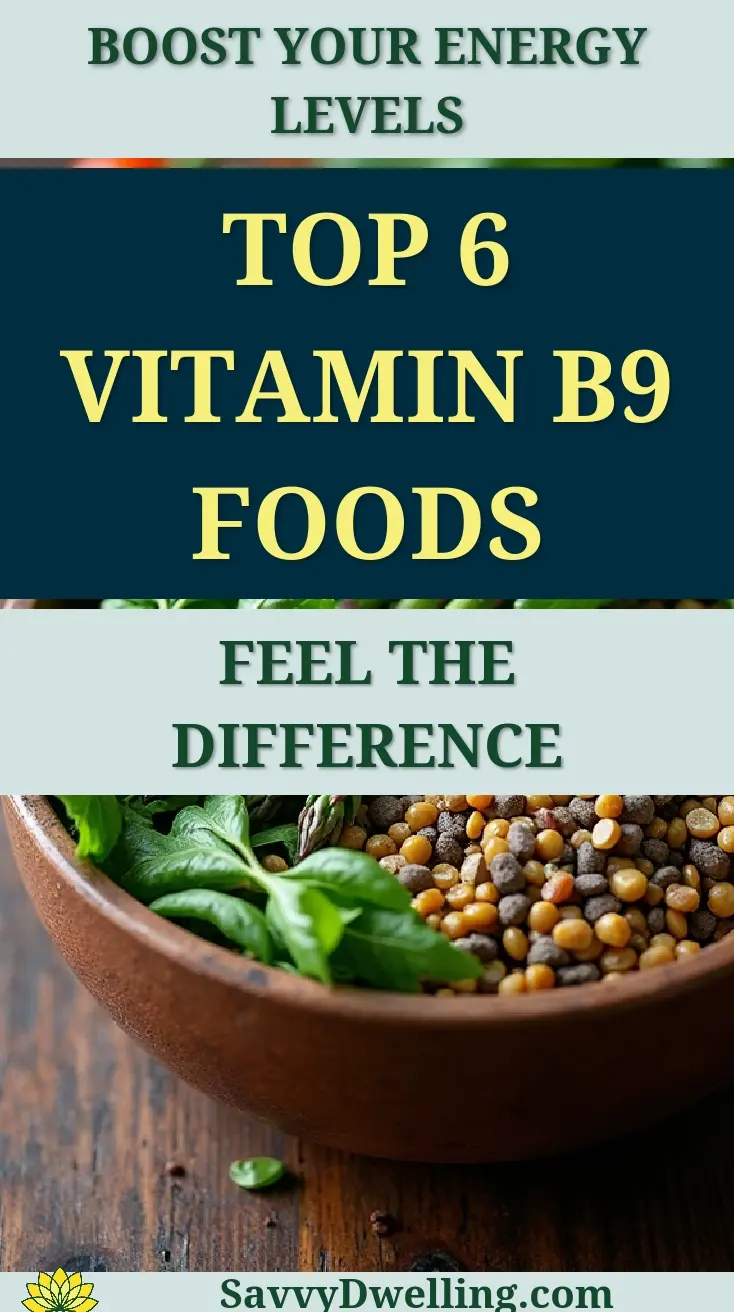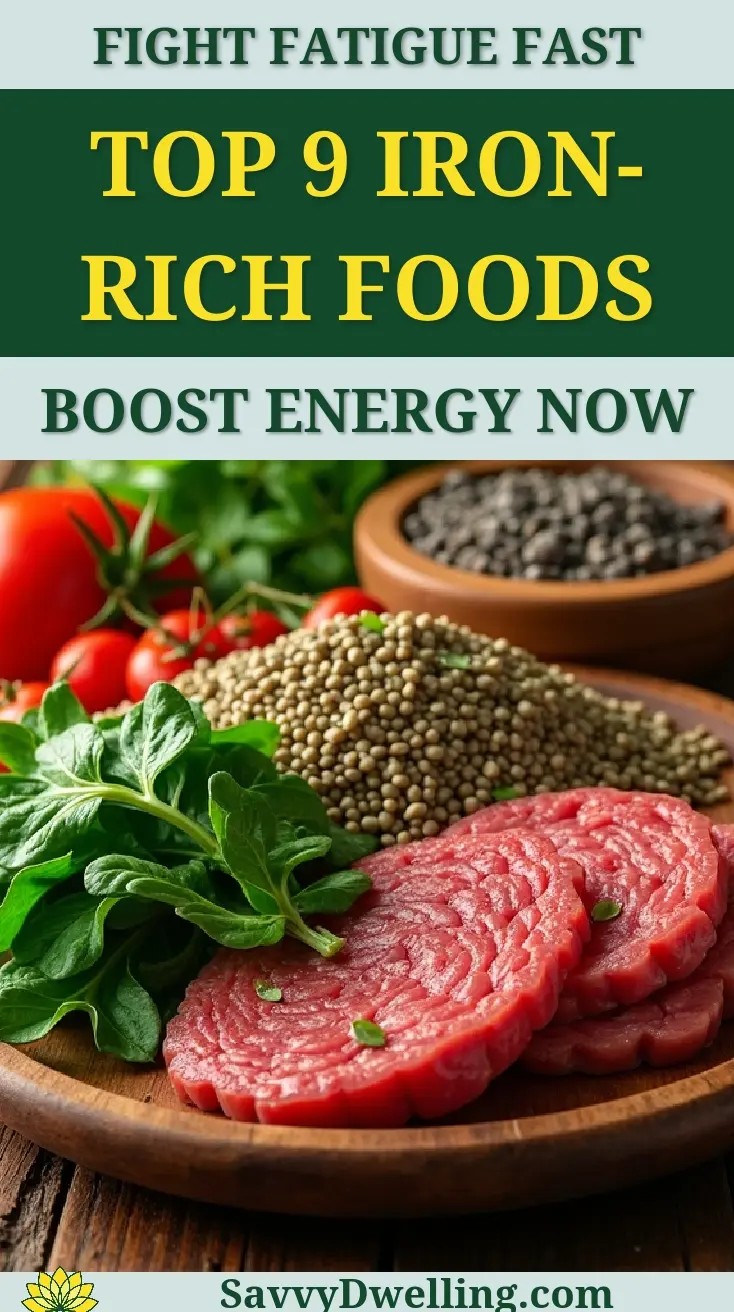The Best Healthy Fats to Include in Your Diet for Optimal Wellness
Are you tired of feeling sluggish after meals or wondering why your skin looks dull despite eating “healthy” foods? The missing piece in your wellness puzzle might be the quality and type of fats you’re consuming. Many people still fear all fats or unknowingly choose processed options that leave them feeling unsatisfied and nutritionally depleted.
This guide cuts through decades of confusing fat myths to show you exactly which healthy fats your body craves for sustained energy, glowing skin, and optimal brain function. We’ve researched the science behind each fat source and tested practical ways to incorporate them into real-life meals – so you can finally feel confident about the fats on your plate and experience the vibrant health benefits they provide.
Contents
- At a Glance: The Best Healthy Fats for Your Kitchen
- 1. Extra Virgin Olive Oil – the Mediterranean Gold Standard
- 2. Avocados – Nature’s Creamy Superfood
- 3. Nuts and Seeds – Portable Powerhouses Of Nutrition
- 4. Fatty Fish – Omega-3 Rich Ocean Treasures
- 5. Coconut Oil – the Tropical Kitchen Staple
- 6. Grass-fed Butter and Ghee – Traditional Fats Done Right
- Smart Ways to Incorporate Healthy Fats Into Every Meal
- Common Mistakes to Avoid When Adding Healthy Fats to Your Diet
- Frequently Asked Questions
- Final Words
At a Glance: The Best Healthy Fats for Your Kitchen
Choosing the right healthy fats can feel overwhelming when you’re standing in the grocery store aisle. The good news is that nature provides plenty of options that support your wellness goals while making your meals taste incredible. However, it’s essential to be able to distinguish healthy fats from unhealthy ones.
The six powerhouse categories of healthy dietary fats deserve a permanent spot in your kitchen. Each one offers unique benefits and culinary applications that can transform both your health and your cooking.
| Fat Source | Primary Benefit | Best Kitchen Use | Storage Tip |
|---|---|---|---|
| Extra Virgin Olive Oil | Heart-supporting antioxidants | Dressings, low-heat cooking | Cool, dark pantry |
| Avocados | Fiber plus healthy monounsaturated fats | Fresh eating, smoothies | Counter until ripe, then refrigerate |
| Nuts & Seeds | Protein, minerals, omega-3s | Snacking, toppings, homemade butters | Airtight containers, refrigerate |
| Fatty Fish | EPA and DHA omega-3s | Grilled, baked, canned options | Fresh: use within 2 days |
| Coconut Oil | Medium-chain triglycerides | High-heat cooking, baking | Room temperature, sealed jar |
| Grass-Fed Butter/Ghee | Vitamins A, D, K2 | Sautéing, finishing dishes | Refrigerate butter, pantry for ghee |
These natural fats work differently than processed alternatives. Your body recognizes and efficiently uses these whole-food sources for energy, hormone production, and nutrient absorption.
The key lies in understanding when and how to use each type. Some healthy oils excel at high-heat cooking, while others shine in raw preparations or as finishing touches.
- Monounsaturated fats: Found in olive oil, avocados, and most nuts
- Omega-3 fatty acids: Abundant in fatty fish, walnuts, and flax seeds
- Saturated fats from quality sources: Present in coconut oil and grass-fed dairy
- Polyunsaturated fats: Available in seeds like hemp hearts and chia
Think of these healthy fat options as your culinary toolkit. Each one serves specific purposes in both nutrition and cooking applications, giving you flexibility to create satisfying meals that support your health goals.
1. Extra Virgin Olive Oil – the Mediterranean Gold Standard
How It Supports Your Health
Extra virgin olive oil stands out as one of the best healthy fats you can include in your diet. This golden liquid contains powerful antioxidants and monounsaturated fats that support heart health and may help reduce inflammation throughout your body.
The natural compounds in high-quality olive oil, particularly oleic acid, work alongside your body’s systems rather than against them. Unlike processed oils, extra virgin varieties retain their beneficial plant compounds because they’re pressed without heat or chemicals.
Research consistently shows that people who consume olive oil regularly as part of a balanced diet tend to have better cardiovascular markers. The polyphenols in extra virgin olive oil act like tiny bodyguards, protecting your cells from oxidative stress.
Best Uses in Your Kitchen
Extra virgin olive oil shines brightest when used properly in your cooking routine. Save this precious oil for medium-heat cooking, salad dressings, and finishing touches rather than high-temperature frying.
Here are the smartest ways to use this healthy oil:
- Drizzle over roasted vegetables while they’re still warm
- Whisk into homemade vinaigrettes and marinades
- Use for sautéing garlic, onions, and other aromatics over medium heat
- Brush onto bread before toasting for a healthier alternative to butter
- Mix into hummus or other dips for added richness
When cooking at temperatures above 375°F, switch to other healthy oils for cooking like avocado oil or ghee. This simple swap preserves olive oil’s delicate flavor compounds and nutritional benefits.
Storage Tips for Maximum Freshness
Proper storage transforms good olive oil into great olive oil that maintains its health benefits longer. Keep your bottle in a cool, dark cabinet away from the stove, as heat and light break down those valuable antioxidants.
Follow these storage guidelines to protect your investment:
- Store bottles in a pantry or cabinet, never on the counter near windows
- Keep the cap tightly sealed after each use to prevent oxidation
- Use within 18-24 months of the harvest date for peak flavor and nutrition
- Buy smaller bottles if you don’t use olive oil frequently
Temperature fluctuations damage olive oil faster than steady cool storage. A consistent temperature between 60-70°F keeps your oil fresh and preserves its status as one of the best healthy oils in your kitchen.

2. Avocados – Nature’s Creamy Superfood
Why Avocados Aid Overall Wellness
Avocados pack more healthy dietary fats per serving than almost any other fruit or vegetable. These creamy gems contain monounsaturated fats that support nutrient absorption, particularly fat-soluble vitamins A, D, E, and K.
The healthy fats in avocados work like a delivery system for other nutrients. When you add avocado to a salad with leafy greens, your body absorbs significantly more carotenoids and other beneficial compounds.
Beyond the fat content, avocados provide fiber and potassium that work together to support your body’s daily functions. The combination of healthy fats and fiber helps you feel satisfied longer, making avocados excellent healthy fats for weight loss goals. These nutrients contribute to a variety of health benefits that make avocados an important addition to a balanced diet. In fact, incorporating avocados can lead to improvements in heart health, digestion, and even skin quality.
Creative Ways to Add Avocado to Meals
Moving beyond basic guacamole opens up countless possibilities for incorporating this nutritious fat source. The mild flavor and creamy texture make avocados incredibly versatile for both sweet and savory applications.
Try these creative avocado additions:
- Blend into smoothies for extra creaminess without dairy
- Mash into egg salad as a healthier substitute for mayonnaise
- Slice onto sandwiches and wraps for natural richness
- Cube into grain bowls and salads for satisfying texture
- Use as a base for creamy pasta sauces and dressings
- Stuff cherry tomatoes with seasoned avocado for appetizers
For breakfast lovers, avocado toast remains popular for good reason. Top whole grain bread with mashed avocado, a sprinkle of sea salt, and your favorite seasonings for a nutrient-dense start to your day.
Selecting and Storing for Peak Nutrition
Choosing the right avocado and storing it properly ensures you get maximum nutritional value from this healthy fat source. A perfectly ripe avocado yields slightly to gentle pressure but doesn’t feel mushy or have dark spots.
Here’s how to select and store avocados like a pro:
- Choose firm avocados if you plan to use them within 3-5 days
- Select slightly soft ones for immediate use
- Avoid avocados with dark, sunken spots or overly soft areas
- Store unripe avocados on the counter to encourage ripening
- Move ripe avocados to the refrigerator to slow further ripening
- Add a cut avocado to an airtight container with lemon juice to prevent browning
If you buy avocados in bulk, plan to use the ripest ones first and gradually work through your supply as others ripen naturally.
Also See: A Guide to the Best Foods for Arthritis and Joint Pain
3. Nuts and Seeds – Portable Powerhouses Of Nutrition
Top Nuts and Seeds for Healthy Fats
Nuts and seeds deliver some of nature’s most concentrated healthy fat sources in convenient, portable packages. Each variety offers a unique blend of monounsaturated fats, polyunsaturated fats, protein, and minerals that support your overall wellness goals.
The beauty of nuts and seeds lies in their versatility and shelf stability. You can keep them on hand for quick snacks, meal additions, or emergency nutrition when you need healthy fats fast.
Almonds and Walnuts
Almonds provide primarily monounsaturated fats along with vitamin E, making them excellent natural fats for heart health support. A small handful of almonds delivers satisfying healthy fats while providing steady energy without blood sugar spikes.
Walnuts stand out for their omega-3 fatty acid content, rare among nuts. These brain-shaped nuts contain alpha-linolenic acid (ALA), a plant-based omega-3 that supports cognitive function and reduces inflammation.
Both almonds and walnuts work well in sweet and savory dishes. Add chopped almonds to yogurt or oatmeal, while walnuts enhance salads and baked goods with their rich, slightly bitter flavor.
Chia and Flax Seeds
Chia seeds pack an impressive nutritional punch in tiny packages. These small seeds expand when mixed with liquid, creating a gel-like texture while delivering omega-3 fats, fiber, and plant-based protein. Additionally, they offer numerous health benefits that make them a superb addition to any diet. Exploring the 8 amazing health benefits of chia seeds reveals why they have gained popularity as a health food.
Ground flaxseeds offer similar omega-3 benefits but require grinding for optimal nutrient absorption. Your digestive system can’t break down whole flaxseeds effectively, so always choose ground flax or grind whole seeds yourself.
Both seeds work beautifully in:
- Overnight oats and puddings
- Smoothies and protein shakes
- Homemade energy bars and baked goods
- Yogurt parfaits and breakfast bowls
Hemp Hearts and Pumpkin Seeds
Hemp hearts (shelled hemp seeds) offer a perfect balance of omega-3 and omega-6 fatty acids. These nutty-flavored seeds provide complete protein along with healthy fats, making them ideal for plant-based diets.
Pumpkin seeds deliver healthy fats alongside zinc, magnesium, and iron. Raw pumpkin seeds work well in trail mixes, while roasted ones make excellent crunchy salad toppers.
Both hemp hearts and pumpkin seeds have mild flavors that complement rather than overpower other ingredients. Sprinkle them onto virtually any dish for an instant nutrition boost.
Smart Serving Sizes
Portion control remains important even with healthy fat sources like nuts and seeds. While these foods provide excellent nutrition, they’re also calorie-dense, so measuring portions helps you get benefits without overconsumption.
Follow these serving size guidelines:
- Nuts: 1 ounce (about 23 almonds or 14 walnut halves)
- Chia seeds: 1-2 tablespoons per serving
- Ground flaxseed: 1-2 tablespoons daily
- Hemp hearts: 2-3 tablespoons
- Pumpkin seeds: 1 ounce (about 1/4 cup)
These portions provide substantial healthy fats and nutrients while fitting into a balanced daily eating plan without excessive calories.
Nut Butter Alternatives to Store-bought
Making your own nut and seed butters puts you in control of ingredients while maximizing healthy fat benefits. Commercial nut butters often contain added oils, sugars, and preservatives that dilute the natural nutritional value.
Creating homemade versions requires minimal equipment and effort:
- Start with 2 cups of your chosen nuts or seeds
- Roast lightly in a 350°F oven for 8-10 minutes if desired
- Process in a high-powered food processor for 2-5 minutes
- Scrape down sides as needed during processing
- Add a pinch of sea salt if desired
- Store in airtight containers for up to one month
Homemade nut butters retain all their natural healthy oils and provide more intense flavor than most commercial alternatives. Try combinations like almond-cashew or walnut-pecan for unique flavor profiles that support your healthy eating goals.
4. Fatty Fish – Omega-3 Rich Ocean Treasures
Fatty fish represent one of nature’s most concentrated sources of omega-3 fatty acids. These healthy dietary fats support brain function, reduce inflammation, and aid heart health in ways that plant-based sources simply can’t match.
The omega-3s in fish are already in their active forms (EPA and DHA), which means your body can use them immediately without conversion. This makes fatty fish incredibly efficient at delivering the health benefits you’re seeking.
Best Fish Sources for Healthy Fats
Not all fish offer the same nutritional benefits. Cold-water fish that feed on algae and smaller fish accumulate the highest levels of beneficial omega-3s. Here are the top performers for your healthy fat goals.
Wild-Caught Salmon
Wild salmon contains roughly 1.8 grams of omega-3s per 3.5-ounce serving. The key word here is “wild” – farmed salmon often has lower omega-3 levels and higher inflammatory omega-6 ratios.
Sockeye and king salmon pack the most omega-3s, while coho and pink varieties offer slightly less but remain excellent choices. Choose wild Alaskan salmon when possible, as these waters tend to have fewer contaminants.
Sardines and Mackerel
These smaller fish offer exceptional value for healthy fats. Sardines deliver about 1.5 grams of omega-3s per serving, while mackerel provides an impressive 2.6 grams.
Because they’re lower on the food chain, sardines and mackerel accumulate fewer heavy metals than larger fish. Canned varieties in water or olive oil make these nutrient powerhouses incredibly convenient and budget-friendly.
Anchovies and Herring
Though small, anchovies punch above their weight with 1.4 grams of omega-3s per serving. Herring provides similar benefits with about 1.7 grams per serving.
Fresh herring tastes mild and flaky, while anchovies add umami depth to dishes. Both fish spoil quickly, so buy them fresh and use within a day or opt for high-quality canned versions.
Plant-based Omega-3 Options
If fish isn’t part of your diet, certain plants provide ALA omega-3s that your body can partially convert to EPA and DHA. While the conversion rate is low (about 5-10%), these sources still offer valuable healthy fats.
Algae-based supplements provide EPA and DHA directly, making them the closest plant-based alternative to fish. Marine algae is actually where fish get their omega-3s in the first place.
Flaxseeds, chia seeds, and walnuts provide ALA omega-3s that support overall health, though they can’t fully replace the benefits of marine sources. Consider combining both approaches for optimal results. Including walnuts in your diet is particularly beneficial, as they are recognized for their remarkable health advantages among nuts. Research has highlighted that walnuts offer numerous health benefits, making them a worthy addition to any nutritional plan.
Safe Preparation Methods
How you prepare fatty fish affects both nutrient retention and safety. Gentle cooking methods preserve delicate omega-3s while eliminating potential contaminants.
- Bake or roast at 400°F or lower to prevent omega-3 breakdown from excessive heat
- Steam or poach to maintain moisture without adding extra fats
- Grill briefly over medium heat, avoiding charring which creates harmful compounds
- Pan-sear quickly in minimal healthy oil like avocado oil for a crispy exterior
Avoid deep-frying fatty fish, as high temperatures destroy beneficial omega-3s and introduce inflammatory compounds. Cook fish to an internal temperature of 145°F to ensure safety while preserving nutritional value.

5. Coconut Oil – the Tropical Kitchen Staple
Coconut oil has sparked considerable debate in nutrition circles. While it’s high in saturated fat, about 60% consists of medium-chain triglycerides (MCTs) that behave differently in your body than other saturated fats.
MCTs are processed more like carbohydrates than traditional fats, providing quick energy rather than being stored as body fat. This unique property makes coconut oil useful in specific situations. The health benefits of MCT oil extend beyond just energy; it can also support weight management and boost mental clarity.
When Coconut Oil Supports Your Goals
Coconut oil works best as part of a balanced approach to healthy fats, not as your primary cooking oil. It can support energy levels when used strategically.
People following ketogenic diets often benefit from coconut oil’s MCTs, which convert to ketones more readily than other fats. If you’re active and need quick energy, coconut oil’s unique fat profile can provide fuel without the blood sugar spike of carbohydrates.
For general health purposes, limit coconut oil to 1-2 tablespoons daily while emphasizing other healthy oils like olive oil and avocado oil as your primary fat sources.
Best Cooking Applications
Coconut oil’s high smoke point (about 350°F for virgin, 400°F for refined) makes it stable for medium-heat cooking. Its subtle tropical flavor works particularly well in certain dishes.
- Baking: Replace butter in recipes at a 1:1 ratio for dairy-free options
- Sautéing: Use for stir-fries and vegetable dishes that complement coconut’s mild sweetness
- Coffee: Blend a teaspoon into morning coffee for sustained energy
- Smoothies: Add small amounts for creaminess and MCT benefits
Avoid using coconut oil for high-heat cooking methods like deep frying, as temperatures above 400°F can create harmful compounds.
Virgin Vs. Refined: What to Choose
Virgin coconut oil retains more of coconut’s natural flavor and may preserve more beneficial compounds. It undergoes minimal processing and maintains a subtle coconut taste.
Refined coconut oil has a neutral flavor and slightly higher smoke point, making it more versatile for savory cooking. The refining process removes most coconut flavor but maintains the MCT content.
Choose virgin coconut oil when you want coconut flavor or are using it raw, and refined when you need a neutral-tasting oil for general cooking. Both provide similar MCT benefits.
6. Grass-fed Butter and Ghee – Traditional Fats Done Right
Quality animal fats from grass-fed sources offer unique nutritional benefits that processed alternatives can’t match. These traditional fats provide fat-soluble vitamins and beneficial fatty acids when sourced responsibly.
Grass-fed butter contains higher levels of vitamin K2, conjugated linoleic acid (CLA), and omega-3s compared to conventional butter from grain-fed cows. This nutritional upgrade makes the higher cost worthwhile for many people.
Benefits Of Quality Animal Fats
Grass-fed butter and ghee provide vitamins A, D, E, and K in forms your body easily absorbs. These fat-soluble vitamins support everything from immune function to bone health.
CLA, found in higher concentrations in grass-fed dairy, may support healthy body composition and metabolism. These natural trans fats differ completely from artificial trans fats and offer protective benefits rather than harmful effects.
The butyrate in grass-fed butter supports gut health by feeding beneficial bacteria in your digestive system. This short-chain fatty acid also shows anti-inflammatory properties throughout your body.
Ghee Vs. Butter: Which to Use When
Ghee is clarified butter with milk solids removed, making it lactose-free and shelf-stable. This process also raises its smoke point significantly, expanding cooking applications.
Use butter when you want rich, creamy flavor for low-heat applications like spreading on bread or finishing vegetables. Its milk solids provide extra flavor but limit high-temperature cooking.
Choose ghee for higher-heat cooking, longer storage without refrigeration, or if you’re sensitive to lactose. Ghee’s nutty flavor and 450°F smoke point make it one of the best healthy oils for cooking at medium-high temperatures.
High-heat Cooking Applications
Both grass-fed butter and ghee excel in specific cooking scenarios. Understanding their heat tolerances helps you maximize both flavor and nutrition.
- Butter (smoke point 300°F): Perfect for light sautéing, baking, and finishing dishes
- Ghee (smoke point 450°F): Excellent for roasting, searing, and higher-temperature cooking
- Combined approach: Start with ghee for cooking, finish with butter for flavor
When using butter for cooking, keep temperatures moderate and watch for browning, which indicates the milk solids are breaking down. This creates a nutty flavor that many enjoy, but excessive browning produces bitter compounds.
Smart Ways to Incorporate Healthy Fats Into Every Meal
Adding healthy fats to your meals doesn’t require a complete dietary overhaul. Small, strategic additions can transform your nutritional intake while making every meal more satisfying and flavorful.
The key is knowing which healthy fat sources work best at different times of day and how to pair them with other foods for maximum benefit.
Breakfast Fat-boosting Ideas
Morning meals set the tone for your entire day’s energy levels. Starting with healthy dietary fats helps stabilize blood sugar and keeps you satisfied until lunch.
Try these simple breakfast upgrades:
- Drizzle extra virgin olive oil over scrambled eggs or add half an avocado to your plate
- Blend chia seeds or hemp hearts into smoothies for creamy texture and omega-3s
- Spread almond or walnut butter on whole grain toast instead of regular butter
- Cook your eggs in grass-fed butter or ghee for rich flavor and stable cooking
- Add chopped walnuts or pumpkin seeds to oatmeal or yogurt
Each tablespoon of these healthy fat options provides sustained energy without the crash that comes from sugar-heavy breakfast choices.
Lunch and Dinner Enhancement Tips
Your main meals offer the biggest opportunities to include substantial amounts of healthy fats. These additions make vegetables more palatable and help your body absorb fat-soluble vitamins A, D, E, and K.
Transform ordinary meals with these techniques:
- Make salad dressings with extra virgin olive oil and add sliced avocado for double fat benefits
- Include fatty fish like wild-caught salmon or sardines twice per week
- Sauté vegetables in coconut oil or grass-fed butter instead of using cooking sprays
- Sprinkle hemp hearts or crushed nuts over cooked grains and roasted vegetables
- Use tahini or almond butter as sauce bases for stir-fries and grain bowls
Remember that cooking with the best healthy oils at appropriate temperatures preserves their nutritional value and prevents harmful compound formation. Choosing the right oil is essential, as different oils have varying smoke points and health benefits. It’s important to know which oils are considered the best and worst for cooking to ensure both flavor and health in your meals.
Healthy Fat Snack Solutions
Snacking can either derail your healthy eating goals or support them brilliantly. Healthy fat sources make ideal snacks because they provide lasting satiety without blood sugar spikes.
Keep these portable options on hand:
- Small portions of mixed nuts and seeds (about 1 ounce or a small handful)
- Apple slices with almond or peanut butter
- Hard-boiled eggs topped with everything bagel seasoning
- Avocado toast on whole grain bread
- Homemade trail mix with raw nuts, seeds, and unsweetened coconut flakes
These snacks deliver healthy fats for weight loss support while preventing the afternoon energy crash that sends people reaching for sugary alternatives.
Proper Portion Guidelines
Even the best healthy fats to eat require mindful portioning. Fat contains nine calories per gram compared to four calories per gram in protein and carbohydrates.
Use these visual guides for appropriate servings:
- Oils and liquid fats: 1 tablespoon (about the size of your thumb tip)
- Nuts and seeds: 1 ounce or 1/4 cup (fits in your cupped palm)
- Avocado: 1/2 medium fruit (about the size of a tennis ball half)
- Nut butters: 2 tablespoons (about the size of a ping pong ball)
- Fatty fish: 3-4 ounces (roughly the size of your palm)
Aim for 2-3 servings of healthy fat sources throughout your day. This typically provides 20-35% of your total daily calories from fat, which aligns with current nutritional guidelines.
Common Mistakes to Avoid When Adding Healthy Fats to Your Diet
Even with the best intentions, many people make simple errors that can diminish the benefits of healthy dietary fats. Avoiding these common pitfalls helps you maximize nutrition while maintaining a balanced approach to eating.
Understanding these mistakes beforehand prevents frustration and helps you build sustainable healthy eating habits.
Overconsumption Even Of Good Fats
The “healthy” label doesn’t mean unlimited quantities. Eating too much of any fat, regardless of quality, can lead to unwanted weight gain and digestive discomfort.
Watch for these overconsumption warning signs:
- Using more than 2-3 tablespoons of cooking oils per day
- Eating entire avocados in single sittings regularly
- Mindlessly snacking on nuts directly from large containers
- Adding healthy fats to every component of meals without considering total intake
- Ignoring calories from healthy fat sources while tracking other foods
Pre-portion nuts and seeds into small containers. Measure oils with actual measuring spoons rather than eyeballing amounts. Your body needs healthy fats, but moderation remains key for optimal wellness.
Using the Wrong Oil for High-heat Cooking
Not all healthy oils for cooking can withstand high temperatures. Using delicate oils at high heat destroys their beneficial compounds and can create harmful substances.
Match your cooking oil to the cooking method:
- High-heat cooking (400°F+): Coconut oil, ghee, or avocado oil
- Medium-heat cooking (300-375°F): Extra virgin olive oil or grass-fed butter
- Low-heat or no-heat applications: Flaxseed oil, walnut oil, or hemp oil
- Salad dressings and finishing: Extra virgin olive oil or specialty nut oils
When oils start smoking, they’ve exceeded their safe cooking temperature. This creates compounds that can irritate your respiratory system and potentially harm your health over time.
Ignoring Storage Requirements
Healthy kitchen fats require proper storage to maintain their nutritional value and prevent rancidity. Improper storage can turn beneficial fats into harmful compounds that taste bad and offer no health benefits.
Follow these storage guidelines:
- Store nuts and seeds in airtight containers in cool, dark places or refrigerate after opening
- Keep opened bottles of delicate oils like flaxseed and walnut oil in the refrigerator
- Use oils within their expiration dates and discard any that smell or taste off
- Store coconut oil at room temperature but away from heat sources
- Wrap avocados in paper towels and refrigerate once ripe
Rancid fats not only taste unpleasant but can also contribute to inflammation in your body. When in doubt, trust your nose – fresh healthy fats should smell pleasant or neutral.
Mixing Healthy Fats With Processed Foods
Adding good fats for diet improvement loses effectiveness when combined with highly processed foods. Pairing healthy fat sources with refined sugars, artificial ingredients, and excess sodium can counteract many of their benefits.
Avoid these counterproductive combinations:
- Adding nuts to sugary cereals or candy-like granola bars
- Using healthy oils in heavily processed frozen meals
- Combining avocado with foods high in artificial preservatives
- Adding nut butters to highly sweetened baked goods
- Using quality fats in recipes loaded with refined flour and sugar
Instead, pair your healthy fat options with whole foods like vegetables, fruits, whole grains, and lean proteins. This combination amplifies the nutritional benefits and supports your overall wellness goals more effectively.

Frequently Asked Questions
How Do Healthy Fats Impact Heart Health and Cholesterol?
Healthy fats, particularly monounsaturated and polyunsaturated fats, play a key role in heart health by improving your cholesterol profile. They can help lower LDL (bad) cholesterol and raise HDL (good) cholesterol when used to replace saturated or trans fats in your diet. For example, regularly consuming sources like olive oil or walnuts has been linked to reduced inflammation and better cardiovascular function.
To apply this, aim to swap butter for olive oil in cooking and include a serving of fatty fish like salmon weekly. Always pair these fats with a diet rich in fruits, vegetables, and whole grains for maximum benefits.
What Are Some Common Misconceptions About Dietary Fats?
A widespread myth is that all fats lead to weight gain or are unhealthy, but in truth, healthy fats support metabolism, vitamin absorption, and satiety. Another misconception is that “low-fat” products are always better; however, these often contain added sugars or refined carbs that can be more harmful than the fats they replace.
Combat these myths by focusing on whole-food fat sources like avocados and nuts, and avoiding processed items. Educate yourself on reading labels to identify hidden unhealthy ingredients in low-fat alternatives. Incorporating certain foods into your diet can also support heart health. Consider adding foods known for their ability to naturally lower cholesterol levels.
Can I Get All My Healthy Fats From Plant-based Sources?
Absolutely! Plant-based diets can provide all necessary healthy fats through foods like avocados, nuts, seeds, and plant oils. For omega-3 fatty acids, which are crucial for brain health, rely on sources such as chia seeds, flaxseeds, or algae-based supplements to meet your needs without animal products.
In practice, incorporate a variety of these daily, like adding hemp seeds to yogurt or using avocado in salads. This ensures you get a balance of monounsaturated, polyunsaturated, and even some saturated fats from plants like coconut.
How Can I Ensure I’m Balancing Different Types Of Healthy Fats in My Diet?
Balancing fats involves including a mix of monounsaturated, polyunsaturated, and saturated fats from diverse sources each week. For instance, rotate between olive oil for monounsaturated fats, flaxseeds for omega-3s, and occasional coconut oil for saturated fats to cover all bases.
A simple strategy is to plan meals around different fat sources, such as having nuts for snacks, fish for dinner twice a week, and using avocado in lunches. Monitor portions to maintain calorie balance and avoid overconsumption of any single type.
Final Words
Adding these healthy fats to your daily meals doesn’t have to feel overwhelming or complicated. Start with one or two options that appeal to you most – maybe drizzling extra virgin olive oil on your salad or adding a handful of walnuts to your morning oatmeal. Small, consistent changes create the biggest impact on your overall wellness.
Remember that quality matters just as much as quantity when it comes to healthy fats. Choose organic, minimally processed options whenever possible, and pay attention to proper storage to maintain their nutritional benefits. Your body will thank you for making these nutrient-dense swaps.
Ready to transform your kitchen and your health? Start incorporating these healthy fats today and notice how much more satisfied you feel after meals. For more practical wellness tips and home solutions that support your healthy lifestyle, check out Savvy Dwelling – we’re here to guide you every step of the way toward optimal wellness.


